Identifying strange sounds while driving is crucial for spotting problems early during a car’s regular maintenance checks. One such problem is an ear-piercing screech that comes from worn-out wheel bearings. If neglected, worn-out wheel bearings can affect the performance, safety, and outlook of the car. The purpose of this article is to provide the readers with the necessary understanding of wheel bearing damage, such as its signs and ways in which it can be repaired. We will help you understand some warning signs and let you know when care is needed so that you are able to enjoy a whole lot better and safer car experience regardless of how much grinding, humming, or peculiar sounds might get annoying sometimes.
What are the Common Symptoms of a Bad Wheel Bearing?
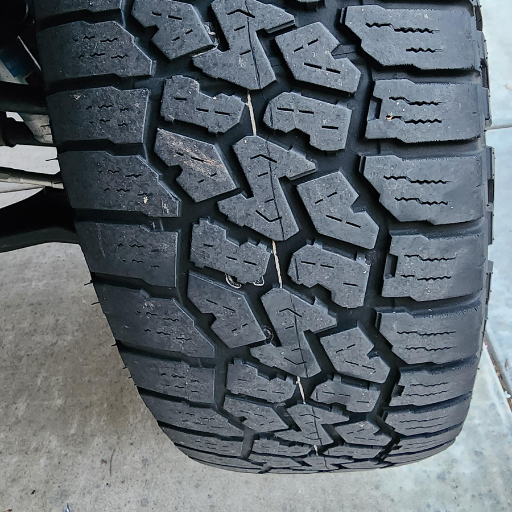
Typical warning signs of a bad wheel bearing include noise disturbances, which sound like grinding, humming, or roaring, which worsen as you increase speed. You might experience uneven tread patterns, vibrations on the steering wheel or a loose wheel. In addition, a bad wheel bearing can also decrease the vehicle’s stability and responsiveness, especially when cornering. Taking care of these issues is important to make sure no further damages are inflicted, and the car can be driven safely.
How to Identify Bad Wheel Bearing Symptoms?
those who are already in the automotive business should fully understand what I mean by this phrase: Never ignore the warnings given by your vehicle. When trying to detectetor symptoms of a bad wheelbearings ad first thing i want to hear are abnormal sounds, that is, grinding, humming and roaring noises bear With them usually being the earliest indicator. After this, I begin to look for vibrations in the steering wheel or instability while driving. These are symptoms that point towards something being wrong within the wheel assembly. Uneven tire wore is also i thin is another indicator of a possible wheel bearing problem. Carrying out the inspections also checks if there is excessive vehicle movement when wheels are rocked sideward, and wheel play is performed by lifting the vehicle up. Combined, these steps have always enabled me to locate bad wheel bearings and find a solution to them before safety is compromised.
What Does a Bad Wheel Bearing Sound Like?
While a car is moving, I focus on certain sounds I expect to hear, and this helps me diagnose a failing wheel bearing. These noises are usually abnormal, and as the condition of the bearing worsens, they become louder. Here’s what I look out for:
- Grinding Noise – This is one of the most common indicators that a wheel bearing is failing. A relatively constant speed while driving and wear and tear or insufficient lubrication of a bearing’s metal parts lead to the sound.
- Humming or Rumbling – A low rumbling sound or a consistent humming noise that is more audible at high speeds suggests a probable failing of a wheel bearing. The humming noise can be affected by changes in the car’s speed or by turning the steering wheel to change the car’s weight balance.
- Clicking or Popping Sounds – A clicking or popping sound is sometimes audible when I turn or perform sharp angle moves. This happens when the internal structures of the bearing are skewed due to its seal or parts damaging, and turning causes force on them.
- Squealing or Growling -These are dry bearings or corroded bearings that are typical to make noises when a motion subsidiary begins. This sound, however, can sometimes increase its volume level during a vehicle’s start or when it is stalled.
- Thumping or Uneven Noise – I have experienced hearing a thumping sound while making right and left turns. This should not be the cause of worry as it may have resulted from the presence of damaged or pitted surfaces in the wheel bearing. This noise may sound as though you are moving over a rough road, even when you are driving on a smoother surface.
I confirm these sounds do not stem from any other issue, such as the CV joints and tire wear. I do this by checking the speed, direction, and road conditions of the vehicle. Using this knowledge while listening allows for both proper operational diagnosis and safer driving.
Are There Any Warning Signs of a Bad Wheel Bearing?
there are several warning signs that should alert you to a potential bad wheel bearing. In my experience, one of the most common symptoms is an unfamiliar sound, such as grinding, hum, or roar, originating from the wheel area, which seems to increase with speed and may change with a turn. Another clear signal is excessive play or looseness in the wheel which is often felt during manipulation of the wheel to check for movement. A defective wheel bearing is also likely to produce vibration of the steering wheel or have uneven wear of the tires after some time. Being vigilant to these sorts of issues and resolving them as soon as possible can save you from more complications and provide sound driving conditions.
What are the Different Types of Wheel Bearing Noise?
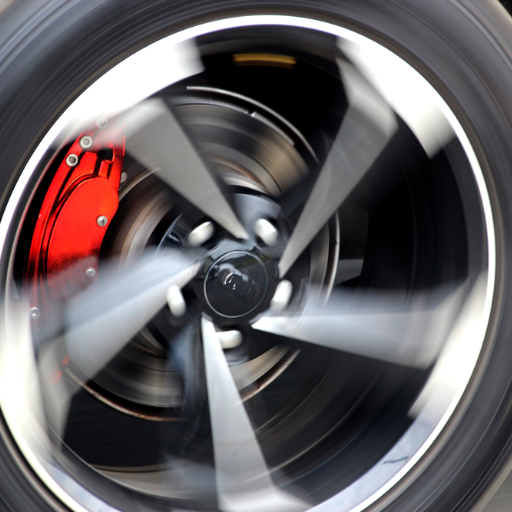
Regarding wheel bearing noise, I can confidently say that there are a few categories, and each can give you some knowledge regarding diagnosis. However, below is a summary of some common noises and their causes.
- Humming Noise
An underground humming noise indicates the need for a wheel bearing replacement. Once you start up, you can hear the noise worsening as you go faster. Most cases, it might be considered a tire noise but it most likely is due to the wheel bearings if the sound persists in all roads.
- Grinding Noise
Being a growling noise, especially when steering, suggests a worn-out wheel bearing, and then comes the nasty sound of grinding. Grinding is the sound produced when lubricants get displaced hence adding metal rubbing to the mix.
- Squealing or Chirping Noise
The squealing of the scale is rare, but in case of any bearing seal damage, it can still happen as high-pitched sounds do whisper from other environmental elements like rust or not enough oil.
- Clicking or Popping Noise
Be it the CV joint or wheel bearing, the sound that is made during a sharp turn certainly differs from the two, where one clicks and the other pops. Both might suggest a defective joint or bearing; only time will explain it.
- Thumping or Rhythmic Noise
A mechanical wear sound is a continuous low frequency that is likely to be caused by a wheel bearing that is either worn or has damage to the bearing race. This type of noise is sometimes associated with the bearing’s normal operational noise and may also be distorted.
One can determine whether the damaged component is the wheel bearing through these sounds by closely analyzing them. It is important that the problem is identified in time because a vehicle operating with a defective wheel bearing is prone to cause accidents or damage other parts. Don’t hesitate to get professional help or deal with the problem yourself if you make out any of these sounds!
What Does a Grinding Sound Indicate?
Grinding noises usually mean that one of the wheel bearings has reached its advanced economical wear limit. From my experience, this sound is often observed in cases of metal monolith contact, and this occurs when the grease inside the bearing is all spent and dried up. This not only causes severe wear to the bearing under consideration but nearby components like the hub or axle could also be damaged. Be it a grinding sound while turning the vehicle, it filters a message to take the necessary step. Otherwise, it augments the cost of repair work, and you will lose your safety on the roads as well. I always recommend this sort of issue be fixed at the very first opportunity so that the situation doesn’t escalate further and cause problems.
Understanding the Hum and Growl from Wheel Bearings
The noise generated from wheel bearings usually happens due to wear and tear or lack of lubrication. With time, the surface of the rolling parts may lose its smoothness, resulting in the skipping of these components during rotation and the resultant existing sound, which is more audible when the vehicle accelerates or turns. Such rattling sounds should be dealt with immediately by opening up the bearing and replacing the deficient portion to ensure automotive safety and to avoid any other wear down of mechanics in the long run.
Is a Squeal Associated with Bad Wheel Bearings?
a squeal sound cannot be attributed to bad wheel bearings. A bad wheel bearing rather would start to make a growl, a hum, or even a rumble, a squeal on the other hand is high frequency sound. If a squeal is produced, then that is most likely due to other things like brake pads that are starting to wear out or a belt that has not been aligned properly. But still, sounds should not be ignored, so it is best to reduce the risks by inspecting the vehicle properly to be able to know the origin and remedy as necessary.
How to Diagnose a Bad Wheel Bearing?
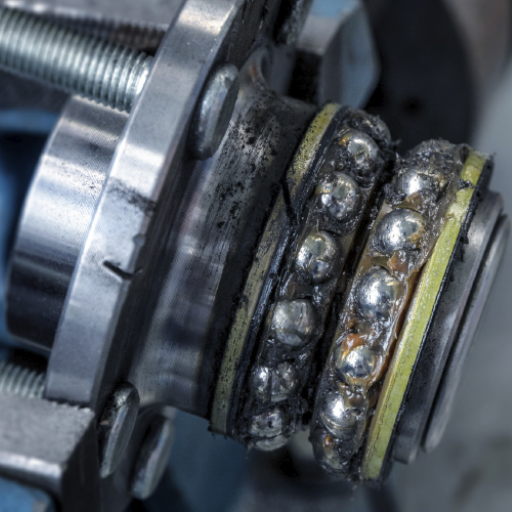
There’s no doubt that diagnosing a bad wheel bearing seems difficult, but approach it systematically, and the problem-identifying process becomes easier. This is how I usually proceed with it:
- Listen for Unusual Noises
A very common symptom of a faulty wheel bearing is noise. While driving, concentrate on any growling, humming, or rumbling sounds that start off on a low frequency and change when vehicle speed increases or decreases. A highly worn wheel bearing may also make clunky or knocking sounds. Just be careful to distinguish this from sounds that are due to other factors like tires or brakes.
- Check for Play or Movement in the Wheel
Once the car is properly raised (using a jack and stands), try to hold the tire at the 12 o’clock and 6 o’clock positions, and then rock the wheel gently back and forth. Ideally, there shouldn’t be any play or looseness around the wheel bearing. If you feel noticeable play or ‘movement’ then the bearing or the components related to the assembly may be worn out.
- Inspect for Uneven or Excessive Tire Wear
Over a period, due to a chipped bearing, tires may be worn out, unequal, or otherwise unusual. For me, a more common thing is to check if the tire has any irregular wear on it, because that would warn me of another possible concern.
- Pay Attention to Vibrations While Driving
Worn-out wheel bearings can lead to vibrations in the wheels and in the steering wheel or vehicle. Usually, steering problems get worse when the speed is increased. In several cases it goes without saying that it is worthwhile looking at the bearings if you feel strange vibrations.
- Feel for Heat Near the Wheel Hub
Increased friction in a defective wheel bearing results in greatly increased heat generation. To be fast but careful, I then examine the cup on the bearing housing to see near the wheel hub (this will help prevent any burns) and see if the temperature is unusually hot. Additionally, by comparing the temperatures of different wheels, the problematic wheel can be isolated.
- Check for ABS or Traction Control Warning Lights
A good number of recent vehicles use integrated wheel speed sensors housed in the bearing assembly. A damaged bearing, for instance, may cause the sensor to send an incorrect signal, which causes the ABS or traction control system light indicators on the dashboard to be illuminated. Again, pay close attention to these lights as they can certainly show that the wheel bearing is in a faulty state.
This way I can confirm with absolute certainty that a wheel bearing is to be blamed. If any of these signs seem to be too obvious, I would suggest that you get it resolved as soon as possible because bad wheel bearings can be unsafe to drive with and even damage the rest of the vehicle. And if you are ever left with doubt of any kind, seek the help of a specialist without any delay!
What Tools Do You Need to Verify Wheel Bearing Noise?
In order to identify a wheel bearing fault noise, I make use of a mechanic’s stethoscope. With this device, I am able to tell where the noise is coming from and unconfound the wheel bearing with the rest of the machinery. Car ramps are also important tools for properly lifting the car since I would need the ability to turn the wheels and inspect if they produce abnormal sound or experience resistance when doing this. A torque wrench is also useful in this sense: after examining the wheels, the use of this wrench would ensure these tools are tightly secured. Last but not least, I use my instruments only alongside a strong sense of sight because listening carefully and checking for any movement or roughness in the rotation of the wheel sometimes confirms my beliefs. That said, these devices allow me to ensure the correctness of my conclusions and diagnose accurately.
What Are the Steps to Diagnose Bad Wheel Bearings?
- Listen for Noise: Take the car for a spin and check for excessive noise coming from the wheels, such as humming, grinding, or rumbling – especially when turning or at high speeds.
- Check for Wheel Play: Support the vehicle on jacks and check for excessive movement in any wheel by pushing and pulling. Consider the bearing worn if you detect excessive movement.
- Spin the Wheel: Try to rotate the wheel by hand while noticing any roughness, resistance, or vibrations felt in the wheel, which probably indicates a defective bearing.
- Inspect the Hub Assembly: Detach the wheel and brake parts and inspect the hub to see if it is worn, damaged by excessive heating, or has some foreign material in it.
- Use a Torque Wrench: Make certain that all components are properly secured during reassembling so that the car can function properly.
The measures provided permit the accurate ranking of malfunctioning wheel bearings, thus balancing both safety and functionality.
When should you consult a pro for bad wheel bearing issues?
you begin to hear a persistent noise — like a grinding or a humming — that seems to get worse as you accelerate, then you should schedule an appointment with a specialist for bad wheel bearing repair. If you experience continuous excessive vibrations while driving or notice your tires wearing out in an irregular fashion, well, it’s high time for you to call in a professional. At this point, the issues have probably deteriorated enough that technical expertise and proper equipment are required to repair them. Although there are some routine maintenance works that can be done, the most significant issue, in this case, is the wheel bearing, which, if not taken care of or resolved in an unprofessional manner, can be a huge risk to vehicle safety. Being irritation-free also means that you have the relief of getting an accurate diagnosis and repair work done by a professional.
When is it Time to Replace a Bad Wheel Bearing?
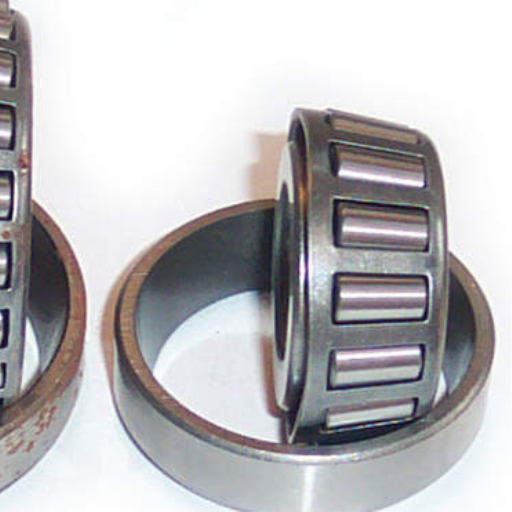
If you start to experience signs such as a grinding sound or a humming noise coming from the wheels, as well as excessive vibrations when driving, then it is time to perform a replacement of the bad wheel bearing. Ignoring these signs is also going to risk damage to adjacent parts, such as the hub assembly or axle, as well as compromising your safety. So it’s best & safe to act instantly in order to increase working efficiency & performance and reduce extra costs as well.
How do you determine if the bearing is bad?
finding a failing bearing is all about observing the symptoms of your car closely. First, you would want to listen for any odd sounds while driving the car, for example, the presence of grinding, humming or growling noise while in motion may suggest that the wheel bearing is going bad. After that, you would want to test for abnormal movement of the wheel by gently lifting the vehicle over the wheel and then attempting to rock it back and forth; excessive movement would suggest quite strongly a failing bearing. Lastly, try monitoring the car’s drive; any vibrations or pull towards one side while driving the car would be an obvious sign. If the above signals emerge, be sure to address them as early on as possible to prevent further deterioration or safety hazards.
What Happens if You Don’t Replace a Bad Wheel Bearing?
Ignoring a faulty wheel bearing can result in both risky and expensive repercussions. Based on my observation, an unattended wheel bearing develops into other issues. This is how it can affect your car:
- Decreased Safety – Faulty wheel bearings, when neglected, can lead to heavy steering and even dislocation of the wheel entirely, which would make it a hazard while driving regardless of the speed. You might also experience a lack of firmness in the steering, which only places you and other motorists in danger.
- Tire Wear – Irregular rotation of a wheel is caused by a worn out bearing, this results in uneven pressure being applied on a tire. In other words, this causes faster damage, even when replacing that tire more often than needed.
- Damage to Other Components -When a wheel bearing wears out, other components like the CV joint, hub, and even the axle take more strain than they are meant to, damaging the latter even more and making repairs harder and more expensive.
- Reduced Performance and Noise – Heavy grinding, humming, and growling sounds arising from a faulty wheel bearing while driving should never be neglected. This, in turn, leads to other problems like decreasing your overall vehicle’s performance and efficiency.
Considering it practically, bearing replacement not only saves money, but also preserves crucial parts and offers the safe operation of the vehicle, it is always better to address the issues instead of escalating them. It is better to be willing to tackle the issue than to take the chances!
Can You Repair a Bad Wheel Bearing Yourself?
Although it is feasible to fix a defective wheel bearing by yourself, I wouldn’t recommend it without the requisite tools, knowledge, and experience. Changing a wheel bearing usually requires the use of specialized instruments such as a press, puller, and equipment to gain a thorough understanding of the mechanics of the vehicle. A tiny mistake at this stage might result in much bigger issues later on, for instance, more damage to your car or danger while driving it. If there is any doubt, it would be prudent to call in a professional to carry out the task for you so that the bearing is properly and adequately replaced.
How Do Bad Wheel Bearings Affect Your Vehicle?
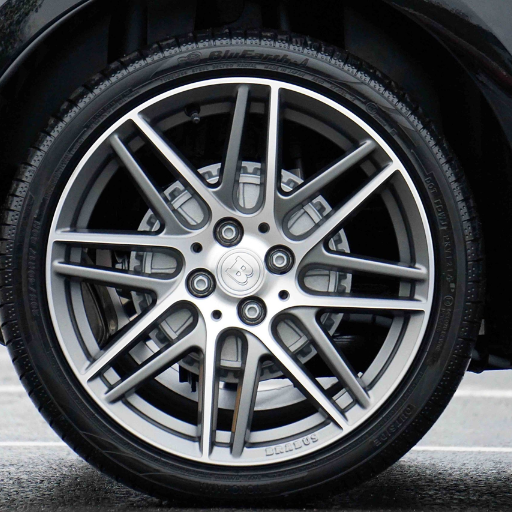
Defective wheel bearings can seriously affect your car’s performance as well as your safety. This can lead to uneven tire wear, excessive noise, vibrations, and poor handling, which can affect comfort while driving. In addition, worn wheel bearings can create more heat due to friction and possibly burn or damage other components, which endangers both the car and its occupants. Neglecting bad wheel bearings can endanger your car’s safety and functionality.
What Impact Do Bad Wheel Bearings Have on Steering?
Worn wheel bearings can noticeably alter vehicle handling. When the wheel bearings start getting worn out, they cause excessive movement in the wheel hub, which takes away the precision from the steering. You may observe that the steering wheel has a certain degree of slack, or the vehicle leans towards one side while turning. Not only do these problems make driving a greater challenge, but they also increase the chances of a loss of control over the vehicle in extreme situations. Replacing damaged bearings in time reduces carelessness in steering and enhances safety.
How Does a Bad Bearing Cause Vibration?
A defective bearing leads to vibration which is caused by damage or wear to the parts of the bearing. Pitting or wear of the bearing surface results in non-uniform rotation of the wheel hub assembly, which in turn leads to vibrations that can be felt in the steering wheel, the seat, or the floor of the vehicle. Usually, these vibrations increase with speed, and in some cases, vibrations indicate an advanced state of wear and tear that requires attention so that further mechanical issues or safety risks do not occur.
What Are the Risks of Driving with Bad Wheel Bearings?
Neglecting broken wheel bearings is not a great idea and shouldn’t be done while driving a car due to the potential risks involved. Based on my personal experience, bad wheel bearings can result in diminished control of the vehicle, uneven tire wear, or, in the worst case to the absolute failure of the wheel. The instability resulting from all of this affects the vehicle’s safety and makes it a threat to others driving on the road,d too. Ignoring the problem only asks for more damage, and when you fix it, your car will be much safer and more reliable.
What Are the Costs Involved in Replacing Wheel Bearings?
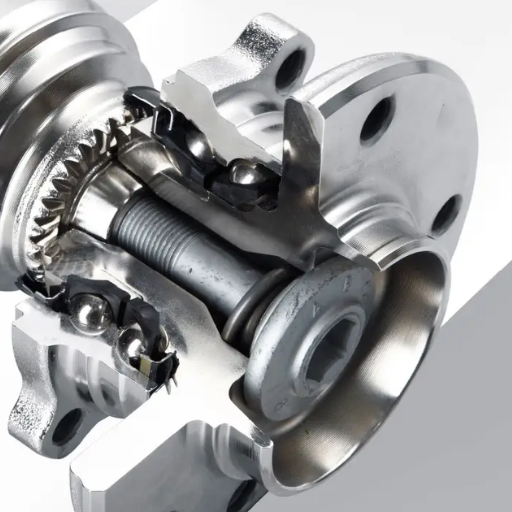
the price of changing wheel bearings of cars largely depends on the brand, model, and location of the auto shop. For average figures, one may say that each wheel could cost you anywhere between two hundred and five hundred dollars. Typically, the price includes the cost of parts as well as the cost of labor. Depending on the car, replacing these wheel bearings is not terribly expensive, but you have to consider the cost of labor, which is reasonable because it entails a great deal of complexity. Moreover, delaying this repair will only offer you opportunities to focus on other types of work. Obviously, it is not their best option, as taking the bearings for repair would be much cheaper than risking and damaging other parts of the mechanical system.
How Much Does it Cost to Replace Bad Wheel Bearings?
Changing a single wheel bearing would set you back around $200-$500, considering the model of your vehicle as well as local labor rates. In most cases, the replacement process is accompanied by labor charges, which make up for a huge chunk of the cost, and for the bearing replacement, all costs, including parts, are provided.
Are There Affordable Options for Wheel Bearing Replacement?
Yes, there are cost-effective alternatives for wheel bearing replacement. The replacement of OEM (original equipment manufacturer) parts with aftermarket parts is a good option as long as they meet certain industry standards, as it cuts costs with minimal impact on the quality. Moreover, rather than visiting dealerships for the replacement, one can consider independent mechanics or repair shops to cut labor costs. Poor maintenance of vehicles can also cause severe degradation of parts, thus increasing the expenditure required to maintain the parts; hence, straightforward long-term repairs are more economical.
What Factors Influence the Cost of Wheel Bearings?
The cost of wheel bearings is impacted by a number of aspects, and as someone who has been in the automotive repair field for some time, I have noticed these aspects differently. To begin with, a car owner’s perspectives about their vehicle make a difference – owners of luxury or sports cars tend to incur high costs on specially built parts. Other than that, the earning potential of a business determines the OEM and aftermarket bearing; in general, OEM parts are costlier, but if the mechanic is knowledgeable with economics, their aftermarket section can be trusted moderately. Other variables to consider include labor costs, which are affected by the localization of the shops, and the nature of the job which in this case is accessing the bearings and changing them. Last but not least, different parts of the country have different wage rates at their unions which affects the amount of charge locals have or the amount of parts they have overstocked. With these factors in mind, a repair shop can assist in predicting costs before making any commitments.
Reference
- SKF Vehicle Aftermarket Blog – This source provides insights into the symptoms of a bad wheel bearing, including the characteristic grinding sound.
- Quora Discussion on Wheel Bearing Noise – A community discussion offering practical advice on addressing wheel bearing noise.
- Reddit Mechanic Advice – A forum where mechanics share tips on diagnosing bad wheel bearings.
Frequently Asked Questions (FAQs)
Q: What are common signs of bad wheel bearing noise?
A: Common signs of bad wheel bearing noise include a rumble or humming noise that gets louder as you accelerate, especially noticeable when turning or at different speeds.
Q: How can I confirm if my wheel bearing is going bad?
A: You can confirm if your wheel bearing is going bad by listening for unusual noises, such as a howl or click, and by inspecting the front wheel for any looseness or play. If the noise increases with speed, it could indicate a defective bearing.
Q: What happens if I ignore bad wheel bearing noise?
A: Ignoring bad wheel bearing noise can lead to more severe issues, such as a complete failure of the bearing, which could cause an accident. It’s important to address the problem promptly.
Q: Can I fix a bad wheel bearing myself?
A: While some people may attempt an easy fix, replacing a bad wheel bearing usually requires specialized tools and knowledge. It’s advisable to consult a mechanic or watch informative videos on YouTube to understand the process better.
Q: What tools do I need to install new front wheel bearings?
A: To install new front wheel bearings, you will typically need a jack, sockets, a torque wrench, and possibly a bearing puller. Always ensure you have the correct tools for your specific vehicle model.
Q: What is the relation between bad tire and bad wheel bearing noise?
A: A bad tire can sometimes produce similar noises to a bad wheel bearing. It’s important to inspect both the tire and the wheel bearings to identify the true culprit of the noise.
Q: How does a loose steering wheel relate to wheel bearing issues?
A: A loose steering wheel can indicate a problem with the suspension system or wheel bearings. If the bearings are worn out, they may cause excessive play in the steering, leading to a loose feeling while driving.
Q: What should I do if I hear a clicking noise when turning?
A: If you hear a clicking noise when turning, it could be a sign of a bad CV joint or worn wheel bearings. It’s best to have a mechanic inspect the vehicle to determine the exact issue.
Q: How do front wheel bearings affect the overall performance of my vehicle?
A: Front wheel bearings play a crucial role in supporting the weight of the vehicle and allowing the wheels to spin freely. Defective bearings can lead to poor handling, increased tire wear, and potential safety hazards.
